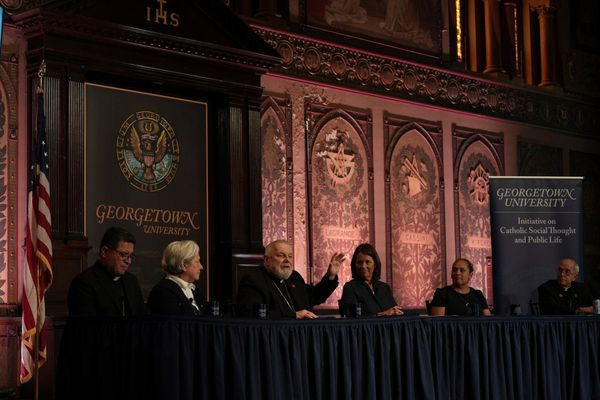
Efforts to remove flammable cladding from tall buildings in London in the wake of the Grenfell fire have taken a “significant step forward”, according to Sir Sadiq Khan.
According to City Hall, there are currently 1,513 buildings in Government remediation programmes where work has yet to start on site.
The mayor announced that a new “joint remediation partnership board” had met for the first time on Tuesday to put into practice the Government’s pledge to spend £1billion to improve fire safety in thousands of tall buildings across the country.
The aim is to ensure that, by the end of 2029, all residential buildings over 11m in height with unsafe cladding will either have been remediated, have a date for completion, or landlords will be liable for severe penalties for failing to make their buildings safe.
City Hall has not allocated any funding to be spent by the new board but said this may follow once the strategy for prioritising repairs is more developed.
Sir Sadiq said the new board – which includes representatives from Government, London councils, building regulators and the London fire brigade – would speed up the removal of unsafe cladding on residential buildings over 11m in London.
He said: “This is a significant step forward in speeding up the removal of dangerous cladding in London, which had been far too slow under the previous Government.
“I will not stop until we can say with confidence that the failings which led to this disaster will never be repeated.”
Last November, the London Assembly warned that the removal of dangerous cladding from thousands of buildings across the capital could only be accelerated with more funding from the Government.
This came after the National Audit Office said that up to 60 per cent of buildings with dangerous cladding had not been identified by the Government, and at the current rate of progress it was due to miss its own estimated completion date of 2035.
The Greater London Authority has already administered more than £1 billion in Government funding for cladding remediation in the capital.
However it is not known how much it will cost to fix all the tall buildings in London that have been fitted with dangerous cladding.
More than half the tall buildings in the UK that require remediation are in London.
Last October, Chancellor Rachel Reeves pledged an additional £1bn in the Budget to remove unsafe cladding.
Last year, the final report from the public inquiry into the 2017 Grenfell Tower fire found that an earlier refurbishment left the block coated in cheap and highly flammable materials while warnings of an impending disaster from those who lived in the tower were ignored.
A total of 72 people were killed in the inferno.
Under the previous Tory government, buildings standing 18m tall or higher were prioritised – with funding for buildings between 11m and 18m being provided in 2023 under Homes England’s cladding safety scheme.
The new Labour government has set targets for both groups of buildings.
The new board was is co-chaired by Tom Copley, the deputy mayor for housing, and Alex Norris, the minister for building safety and fire.
Mr Norris said: “The pace of remediation has been far too slow and nearly eight years on from the Grenfell Fire tragedy far too many people are living in buildings with unsafe cladding.
“This problem is particularly acute in London, which is why I'm pleased to be working with the deputy mayor for London and the Greater London Authority to accelerate the pace of remediation work in London, and ensure residents feel safe and secure in their homes.
“Alongside the London fire brigade, London Councils and regulators, we are bringing renewed vigour to tackling long-overdue issues with unsafe cladding in the capital.”







